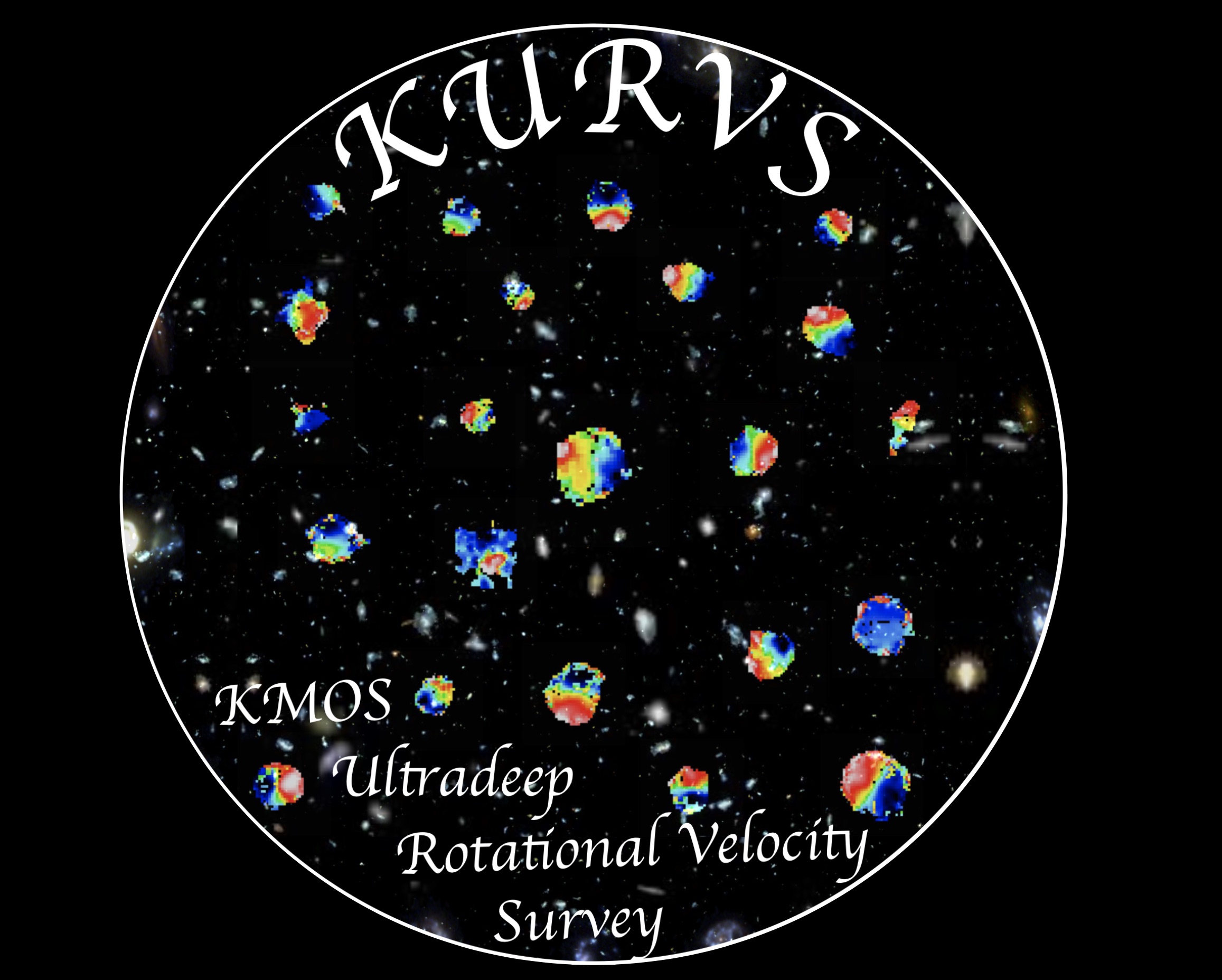KMOS Ultradeep Rotational Velocity Survey (KURVS)

KMOS Ultradeep Rotational Velocity Survey - A VLT Large Program (2018-2020)
In the early 1970s, Vera Rubin used the velocities of 67 HII regions in the disk of M31 to show that the enclosed dynamical mass of the galaxy continued to rise out to at least 24 kpc, far beyond the optical radius (Rubin et al. 1970). Although they concluded that ``extrapolation beyond that distance is clearly a matter of taste'', by 1978 Rubin had shown that flat rotation curves (at radii up to 50kpc) were ubiquitous in high luminosity spiral galaxies. During this period, the work of observers and theorists converged, culminating in a collective assertion that galaxies are immersed in extended dark matter halos.
There is a general consensus on the need for dark matter in galaxy evolution theory, and on its widespread presence in galaxies in the present day. However, recent studies of the shapes of rotation curves for thousands of systems at z~1-2 have so far provided conflicting evidence as to whether or not dark matter is equally dominant in galaxies in the distant past, leaving open the potential for a shift in our understanding of galaxy formation and evolution.
Galaxies at such distances are very faint. These contradictory results have therefore relied on stacking thousands of datacubes to measure the average shape of the galaxies' rotation curves. The three-dimensional redistribution of the observed galaxy flux that this requires can have strong systematic effects on the resulting rotation curve shape.
To overcome these systematic limitations, between 2018 and 2020 we are conducting the KMOS Ultra-deep Rotational Velocity Survey (KURVS) - a VLT Large Program (1102.B-0232) that is obtaining the deepest KMOS observations ever made (120 hours per galaxy) of main-sequence star-forming galaxies at z~1.5. Using the spatially-resolved H-alpha and [NII] nebular emission in the galaxies as a dynamical tracer, KURVS will map their two-dimensional kinematics up to (and beyond) six times their stellar disk scale (~15 kpc), reaching far into their outskirts. This will allow us to measure the extended rotation curves on an individual, galaxy-by-galaxy basis, to definitively determine to what extent typical star-forming systems 9 billion years in past were either baryon or dark matter dominated.